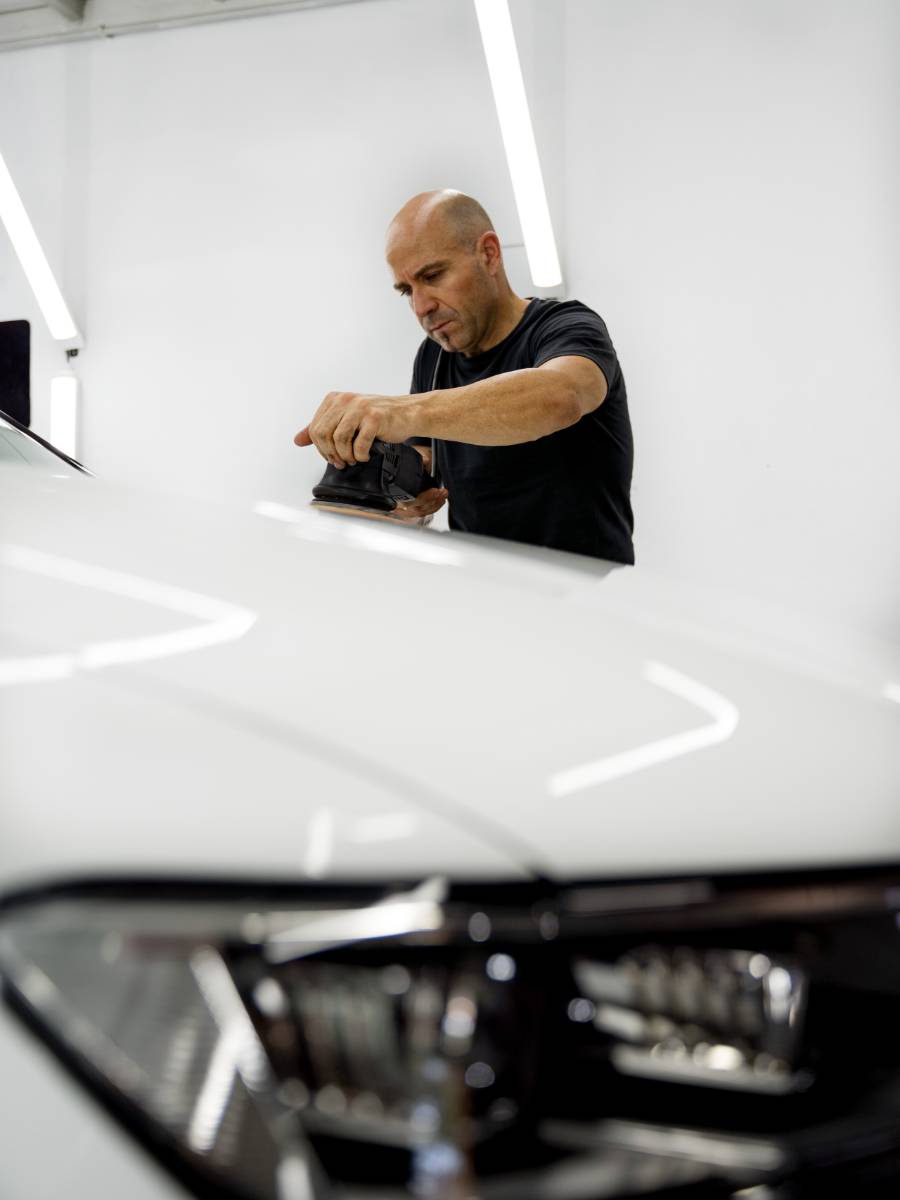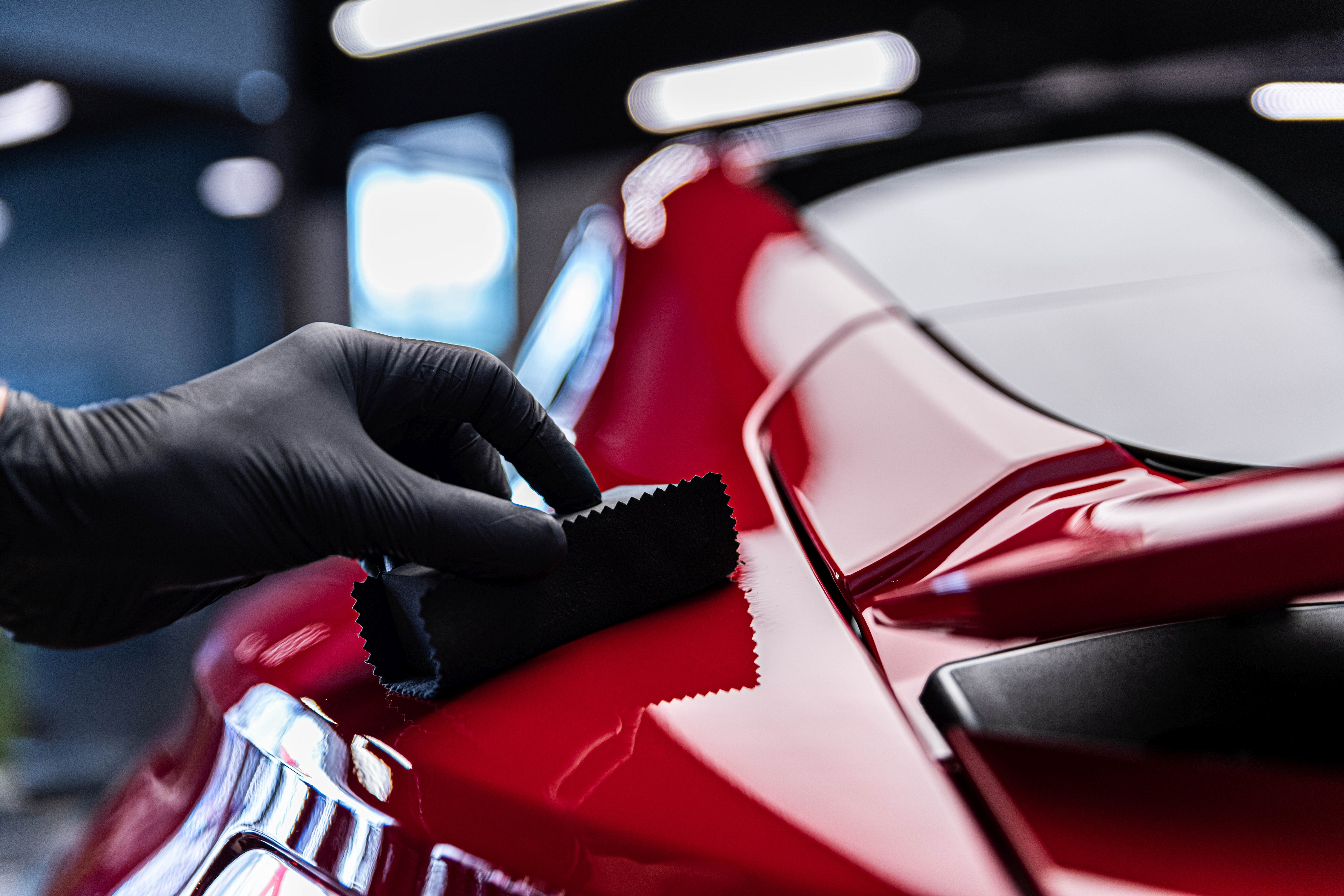Ceramic Finish vs. Traditional Wax: Which Supplies Much Better Long-Term Defense?
The discussion in between ceramic finishes and standard wax for car security has gathered significant focus amongst automobile enthusiasts and specialists alike. Ceramic finishes boast superior durability and resistance to environmental variables, yet the complexity of their application raises inquiries regarding ease of access and functionality.
Overview of Ceramic Layer
Ceramic finishing has actually gotten considerable appeal among automobile lovers and detailers alike due to its sophisticated protective top qualities. This innovative innovation is designed to develop a long lasting, hydrophobic shield over a vehicle's paint surface area, significantly enhancing its resistance to environmental contaminants such as dirt, UV rays, and chemical discolorations. Unlike conventional wax, which supplies a temporary layer of protection, ceramic layers bond at a molecular degree with the paint, offering lasting durability-- typically expanding past two years with appropriate upkeep.
The application procedure entails precise preparation of the automobile's surface area, including cleaning and polishing to make certain optimal adhesion. When used, the finishing treatments to form a robust layer that not just includes depth and gloss to the paint yet additionally simplifies maintenance. With its hydrophobic homes, ceramic finish permits water and dirt to glide off more conveniently, decreasing the frequency of cleans and minimizing the risk of swirl marks.
Furthermore, ceramic finishes are readily available in various formulations, enabling users to select items tailored to their particular requirements and preferences. Overall, ceramic covering represents a significant development in paint protection technology, delivering premium performance compared to conventional options.
Summary of Typical Wax
Typically considered as a staple in automotive treatment, wax acts as a prominent choice for those looking for an uncomplicated technique to enhance and shield their automobile's paint - ceramic coating. Automotive wax normally makes up natural active ingredients, such as carnauba, or synthetic compounds, made to produce a protective layer on the surface of the paint. This layer not just enhances the vehicle's gloss and beam but likewise provides an obstacle against ecological pollutants
The application of wax is generally easy to use, making it accessible for both experts and Do it yourself fanatics. Once applied, wax calls for a curing period, after which it solidifies to create a protective covering.
However, while wax is efficient for enhancing the aesthetic charm of a lorry, it is very important to keep in mind that the defense it offers may require a lot more constant reapplication compared to alternative products, such as ceramic layers. In general, standard wax stays a popular option for those prioritizing simplicity of usage and prompt visual enhancement.
Longevity and Longevity Comparison
While both ceramic finishings and conventional wax deal protective advantages for automobile paint, their toughness and longevity vary dramatically. Traditional wax, generally made from all-natural carnauba or artificial polymers, typically offers a protective layer that lasts roughly three to six months. This relatively short lifespan demands regular reapplication to keep optimum defense.
In comparison, ceramic finishes are crafted from sophisticated nanotechnology, forming a covalent bond with the paint surface. This causes a durable, hydrophobic layer that can withstand for two to 5 years, relying on the item and environmental problems. The premium toughness of ceramic finishings is associated to their chemical framework, which uses boosted resistance to scrapes, UV rays, and oxidation.

Defense Against Environmental Variables
Safeguarding a lorry's paint from environmental aspects is essential for preserving its look and value gradually. Autos are continuously revealed to a variety of aspects, consisting of UV rays, bird droppings, tree sap, acid rain, and roadway gunk, all of which can jeopardize the stability of the paintwork.
Ceramic finishings provide a robust defense versus these ecological aggressors. Unlike standard wax, which can degrade rapidly under UV direct exposure, ceramic layers form a long lasting, hydrophobic layer that stands up to the hazardous impacts of sunshine and environmental see here contaminants. This sophisticated modern technology creates a chemical bond with the car's surface, using superior security that lasts for several years, also in severe problems.
Conventional wax, while less complicated to apply, generally requires frequent reapplication and uses minimal resistance to contaminants and UV rays. Gradually, it can damage down, leaving the paint at risk to scrapes and oxidation. In comparison, ceramic layers keep their protective qualities much longer, significantly decreasing the risk of paint damage and ensuring that the car keeps its aesthetic appeal. Therefore, ceramic finishings are progressively acknowledged as the exceptional choice for lasting defense versus environmental elements.
Application and Maintenance Distinctions
The techniques of application and succeeding maintenance for ceramic layers and conventional wax vary considerably, influencing the general customer experience and effectiveness of each item. Ceramic coverings need an even more elaborate application procedure, generally including surface area preparation that consists of cleaning, decontaminating, and brightening the lorry. Once the surface prepares, the ceramic covering is used in a regulated environment, commonly needing expert proficiency to make sure correct curing and bonding to the paint.

While both items enhance vehicle appearance, the longer-lasting protection provided by ceramic finishes might validate their preliminary financial investment, in spite of the even more requiring application process. On the other hand, standard wax stays a prominent option for those seeking an easier, albeit temporary, option.

Final Thought
In final thought, ceramic layers show significant benefits over traditional wax in regards to durability and environmental management. With a lifespan extending 2 to 5 years and premium resistance to UV rays, dust, and chemical spots, ceramic finishes use a much more efficient service for long-term vehicle maintenance. The application process might need professional expertise, the resulting price financial savings and decreased regularity of reapplication emphasize the value of ceramic coatings for those looking for ideal vehicle security.
The argument between ceramic finishes and conventional wax for lorry security has actually garnered considerable focus among automotive lovers and experts alike. Unlike typical wax, which gives a short-term layer of security, ceramic layers bond at a molecular degree with the paint, using long-lasting resilience-- usually prolonging past two years with correct maintenance.
While both ceramic finishes and conventional wax deal protective benefits for auto paint, their sturdiness and longevity differ dramatically. For automobile fanatics seeking long-lasting defense, ceramic finishings offer a compelling advantage over standard wax items.
In final thought, ceramic layers demonstrate substantial advantages over typical wax in terms of resilience and ecological protection.